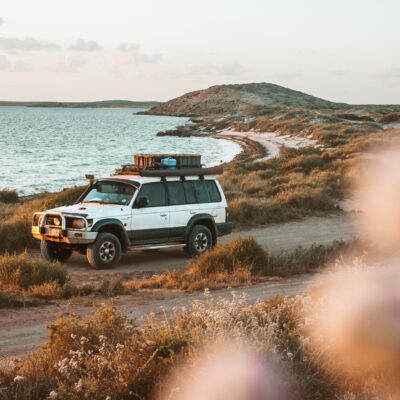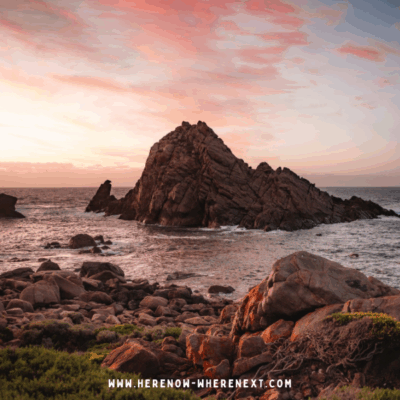An Iceland Roadtrip should be on everyone’s bucket-list. It promises to be an awe-inspiring adventure to breathtaking landscapes, cascading waterfalls, and rugged coastlines. To make the most of your Icelandic journey, here are five things you need to consider before hitting the road:
Contents
- Iceland Roadtrip in Summer vs. Winter
- Choosing a Hire Car for your Iceland Roadtrip
- Make sure you have the right insurance
- Driving in Iceland
- Plan ahead for fuel and accommodation
Iceland Roadtrip in Summer vs. Winter
Iceland offers two distinct faces depending on the season, each with its own unique allure. During the summer months, typically spanning from June to August, Iceland is a vibrant landscape with lush greenery. From the iconic Golden Circle to the picturesque South Coast and highlands, all the roads are open for you to adventure. The best part? The days are long, with nearly 24 hours of daylight, giving you plenty of time to explore!
On the other hand, winter in Iceland offers pristine snowy landscapes. From October to March, the country transforms into a winter wonderland. It’s when you can get the chance to witness the Northern Lights dancing across the night sky. While the days are shorter, Iceland’s icy landscapes, frozen waterfalls, and snow-covered mountains create a magical atmosphere. Winter is also a great time to soak in geothermal hot springs or do activities like ice caving and glacier hiking. The main downsides are the weather – it gets really cold – and that many of Iceland’s roads are closed in winter. This means you won’t be able to explore far off the ring road without renting a large 4×4 or booking onto a Super Jeep tour.
You can avoid the crowds by visiting in the shoulder seasons before and after the peak summer season. By visiting in Spring (April/May) or later in the year around September, you can take advantage of lower prices for both hire cars and accommodation. Since there is lower demand most hire car companies will offer discounts of as much as 50%. Visiting in these months comes with their own advantages: you’ll see wildflowers in Spring, or witness Iceland’s landscapes changing to Autumnal colours in September. Réttir, the yearly round-up of Icelandic sheep, also takes place in September.
Deciding when to do your Iceland roadtrip ultimately depends on your preferences, budget and the experiences you’re after. Whichever season you choose, you’ll be sure to have a truly epic Iceland roadtrip.
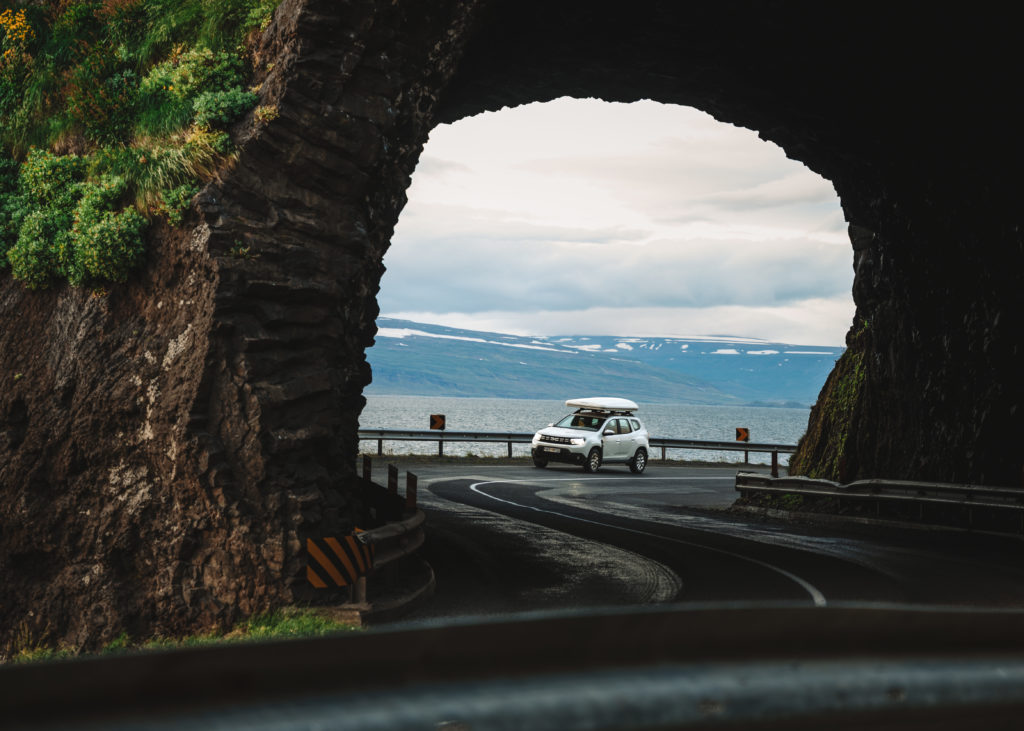
Choosing a Hire Car for your Iceland Roadtrip
Before choosing a hire car, think about your travel plans are to decide type of vehicle is right for you. Some things to think about are:
Do you have unlimited mileage?
You will rack up the kilometres quickly as you explore the Ring Road and beyond. No matter what car you hire, make sure your rental includes unlimited mileage so you aren’t surprised by extra costs!
Do you need a 4-Wheel Drive?
If you’re planning to venture off Iceland’s Ring Road, chances are you’ll be driving on one of its F-roads. The F-roads are unpaved roads with rugged terrain and occasional river crossings to tackle. You legally need a 4×4 vehicle to drive on the F-roads, and you definitely would want one anyway to give you the necessary traction and stability to navigate with confidence. A 4WD is also recommended if you will be travelling in winter, as the weather can be intense and unpredictable.
The cost of hiring a 4×4 is higher than a regular 2WD vehicle, so think about your itinerary and where you want to visit. Without a 4WD you can join tours to most places on the F-Roads, which may cost as much as $500 USD per person. If you have more than 1 or 2 places you want to visit that require a 4×4 and a couple of you travelling together, it may work out cheaper to pay the extra for your own 4WD vehicle. You need to be at least 20 years old to rent a car in Iceland, or 23 for a 4×4.
Do you need a camper?
One of the most budget-friendly accommodation options is staying in Iceland’s many campsites en route. The cheapest way to do this is to pitch a tent, although this is definitely not the most comfortable. You also would not want to be staying in a tent in winter when temperatures can drop as low as -10 C! Getting a camper gives you the perfect mix of camping and comfort, and you can get a kitchen setup too to save money on food. Campers include traditional vans, which are usually 2WD vehicles and offer the most space, 4x4s with a rooftop tent or vehicles with a bed set up inside. Of course if you’re planning to stay in hotels then any vehicle will do, as you’ll just need one that will get you from A-B.
What is your budget?
Hiring a car in Iceland will no doubt be the most expensive part of your trip. There’s no way to avoid that other than not hiring a car at all, which I definitely don’t recommend unless you’re happy just joining onto tours from Reykjavik. To make the most of your Iceland Roadtrip and to explore further afield, you need to hire a car. What type of vehicle you hire will ultimately depend on your budget, ranging from:
- Regular 2WD vehicles – from 80,000 ISK (~$600 USD) for a 7 day hire. Manual cars are generally cheaper than automatic.
- Small/medium 4WD vehicles – from 130,000 ISK (~$980 USD) for a 7 day hire.
- Large/ luxury 4WD vehicles – from 230,000 ISK (~$1,700 USD) for a 7 day hire.
- Campervans – from 400,000 ISK (~$3,000 USD) for a 7 day hire.
These prices are approximate for a 7 day period during the peak season in 2023, so prices may be more or less depending on when you are booking for. Generally they are around 50% less during the off-season. Don’t forget to include any additional costs: insurance, equipment, extra drivers etc.
We went for a Dacia Duster with a rooftop tent, which we rented from Lotus Car Rental. This was the perfect choice for us as we knew we needed a 4×4 to visit some of our dream destinations like Kerlingarfjöll, Landmannalaugar and Maelifell, which you can only get to by F-roads (and in the summer months). The rooftop tent was so easy to set up and gave us a cosy bed with a view every night! We were also able to get sleeping bags and a kitchen box directly through Lotus Car Rental so we had everything we needed to make camp.
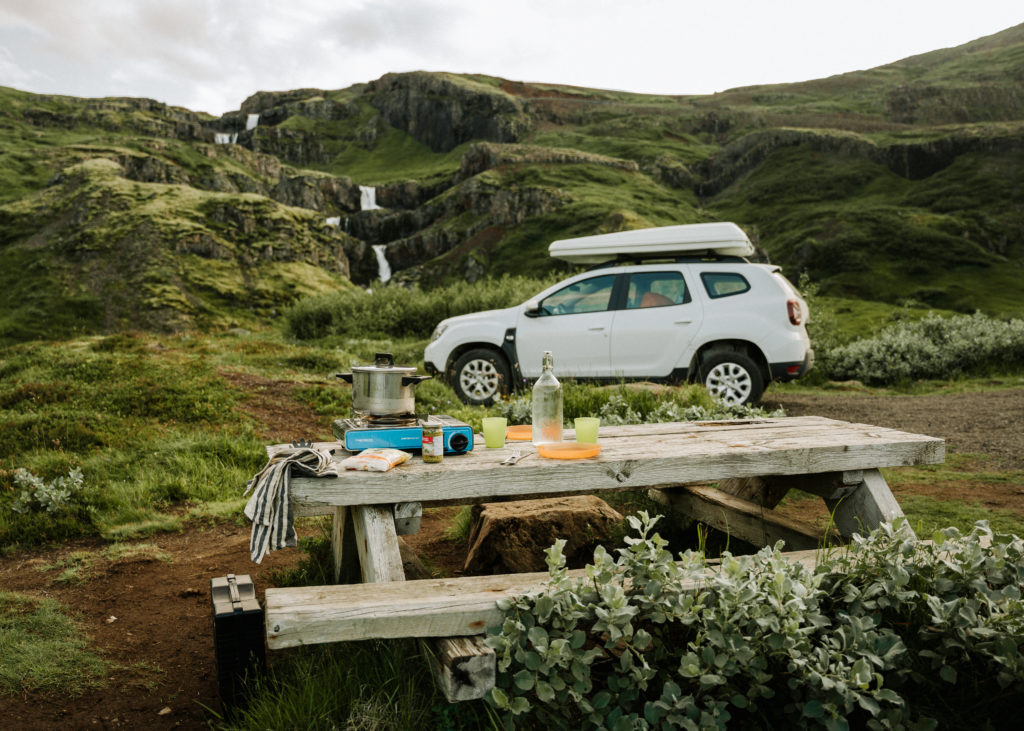
Make sure you have the right insurance
Iceland’s weather and road conditions can be unpredictable, so it’s essential to have the right insurance coverage for your road trip. When renting a car, inquire with the rental company about the insurance options they offer. Collision Damage Waiver (CDW) is mandatory, and usually provided by car rental companies in Iceland as standard. This basic insurance covers damage to the vehicle and personal injury if you’re in an accident, and you’ll only need to pay the excess. It won’t cover you for any damages caused by driving off-road or on F-roads, though. So if you’re planning on doing so I recommend purchasing additional coverage. Other insurances you may want to look into for coverage against some uniquely Icelandic damages are:
- Tire Insurance
- Sand and Ash Protection
- Gravel Protection (GP)
- River Crossing Insurance
Since some of these aren’t problems you might face on your typical roadtrip in other countries, you may want to purchase the extra coverage from the Icelandic rental company even if you have your own third party insurance provider. In any case, make sure you carefully read and understand the terms and conditions of whatever insurance package you choose. That way you’ll know exactly what is and what’s NOT covered.
When I was researching hire car companies, Lotus Car Rental stood out because of its Platinum insurance cover. It includes all of the above insurance coverages, including River Crossing Insurance for 4x4s which most Icelandic rental companies don’t cover. River crossings can be a bit scary, but having that protection gives you real peace of mind. That way if the worst should happen you won’t be stranded without a car or saddled with a huge repair bill. If you’re renting a 4WD and planning to be going on F-roads and crossing rivers, having Platinum Insurance is a no-brainer!
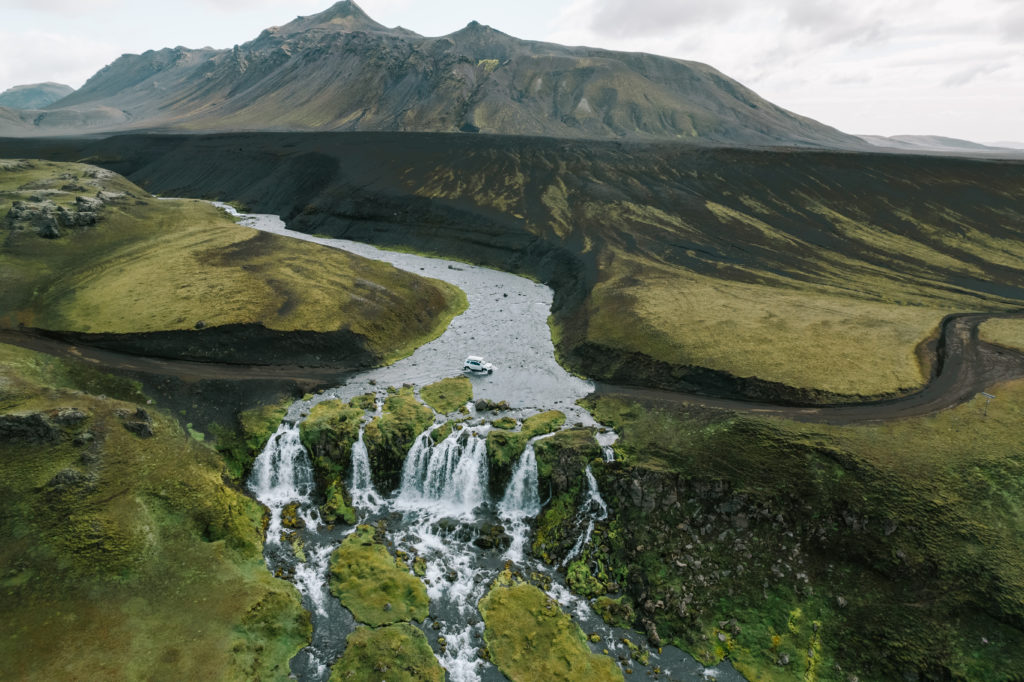
Driving in Iceland
Hiring a car for your Iceland roadtrip offers an incredible sense of freedom and the opportunity to explore the country at your own pace. However, it’s essential to familiarise yourself with local traffic rules, road conditions, and driving etiquette to ensure you stay safe. In Iceland, the speed limits are generally lower than in many other countries. On paved roads, the maximum speed limit is 90 km/hour (55 miles/hour), unless otherwise indicated. The speed limit on gravel roads is 80 km/hour, however you’ll likely be travelling much slower. In residential areas or near schools, the speed limit is typically 30-50 km/ hour. Always adhere to the speed limits!
Iceland’s weather can change rapidly, so be prepared for varying conditions. Strong winds, fog and icy roads are common in winter, but don’t be surprised if you get caught in a storm even in summer. Check weather forecasts and road conditions regularly, especially if you’re planning to venture into more remote areas. Adjust your driving accordingly, reduce your speed, and maintain a safe distance from other vehicles. F-roads are usually closed in winter due to snow, and others sometimes close too. The best way to keep up to date with road conditions and closures is by downloading the SafeTravel app and checking for updates regularly.
In rural areas, you may also encounter single-lane bridges. Keep an eye out for signs indicating priority, although generally the rule is: whoever gets to the bridge first, crosses first. And watch out for sheep!
Plan ahead for fuel and accommodation
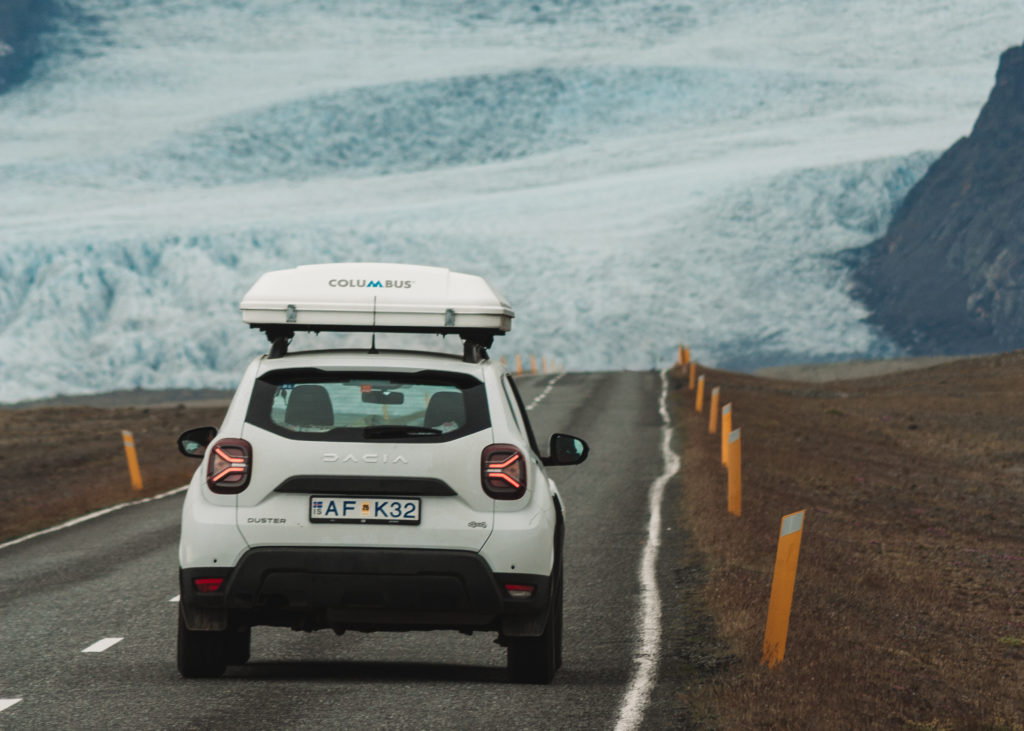
Iceland’s vast landscapes often mean limited services, especially in remote areas. Planning ahead for fuel and accommodation is essential to ensure your roadtrip goes smoothly. Fuel stations are typically located in towns and along major roads. As you venture into more remote regions or travel along less-traveled routes, the distances between fuel stations increase. So make sure you plan your fuel stops strategically and fill up whenever you can to ensure you have a full tank before embarking on longer stretches. Many of Iceland’s fuel stops are self-service and will take a pre-paid amount from your card before fuelling, then refund any unused amount. Many of these will only take debit cards not credit cards, so don’t forget to travel with both!
Accommodation options in Iceland range from guesthouses and campsites to hotels and farm stays. During the peak travel season in summer, availability can be limited, so it’s advisable to book your accommodation well in advance. For campsites, you can be a lot more flexible as many don’t take reservations, and will operate on a first-come-first-served basis. You can book some campsites in advance through the Parka.is app or through the campsite’s website.
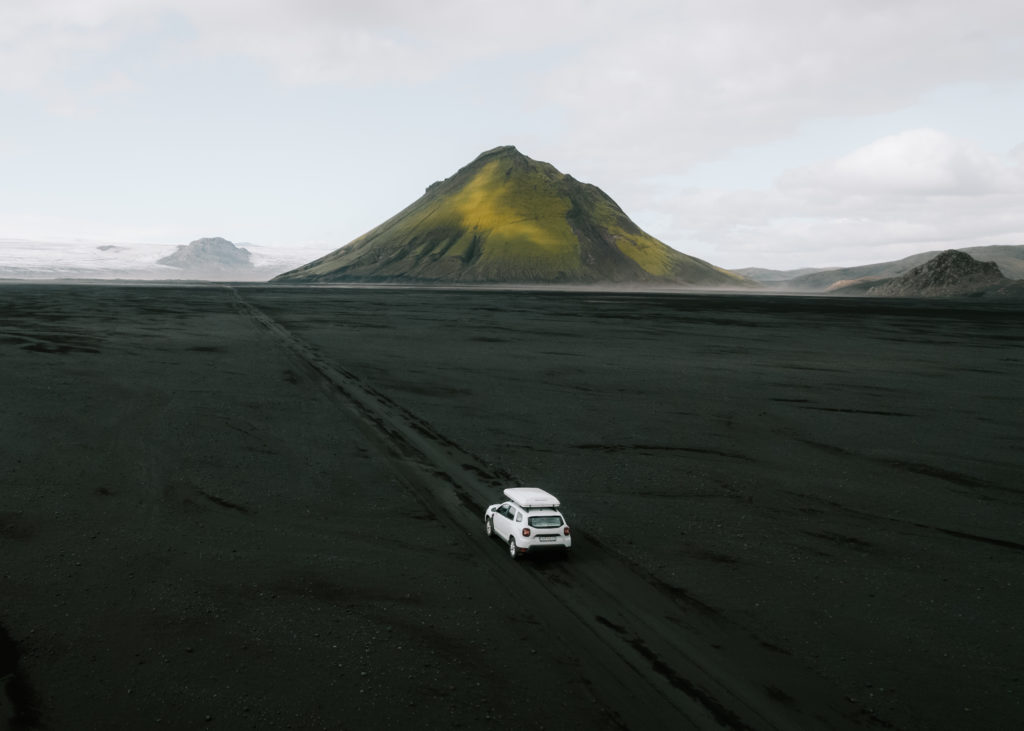
Your Iceland road trip will be an adventure of a lifetime, I guarantee it! By considering these five essential aspects, you can embark on a seamless and unforgettable journey through Iceland’s magnificent landscapes. Start planning now, pack your sense of adventure, and get ready to hit the road!
FYI: I was lucky enough to work with Lotus Car Rental during my visit to Iceland which meant I received a discount on my car hire. Regardless, my experience was entirely positive and I can’t recommend them enough. I would never recommend something if I didn’t think it was genuinely worth it, and for me the fact that Lotus Car Rental is the only car rental company in Iceland to offer River Crossing Insurance made hiring through them a no-brainer!
Where next?
You can also check out some of my blogs on other destinations here.


